Docker Certification Practice Questions – Dockerfile

Docker allows applications to run securely while being isolated in a container, packaged with all its dependencies and libraries. It has become extremely popular virtualization technology of recent times. Thus, it makes it much more important to learn this technology and complement your developer’s experience as it not only enhances your productivity but also help you in your career from an overall perspective. Read this post in relation to why you should consider adopting docker sooner than later. In this post, you will take a practice test and learn the related notes in relation to building Docker image using Dockerfile. This and several other practice tests which will be published …
Kubernetes Certification Practice Test (Storage Volumes)
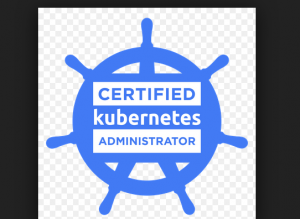
Kubernetes storage volumes is a very important concept in relation to how data is managed within a Pod (consisting of one or more containers) and also the data lifecycle. In this post, you will learn about some of the following in relation to Kubernetes storage volumes. There is a practice test which will help you test your knowledge in relation to the storage volumes concept in Kubernetes. This test could prove to be useful and helpful for Kubernetes certification examination for Certified Kubernetes Administration (CKA). It may also prove to be useful for interviews. Revision notes on Kubernetes storage volumes Practice test Revision Notes Kubernetes different volume types such as some of the following …
Data Science – What are Machine Learning (ML) Models?
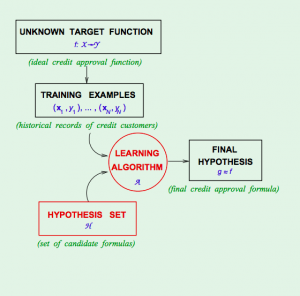
Machine learning (ML) models is the most commonly used in a data science project. In this post, you will learn about different definitions of a machine learning model to get a better understanding of what are machine learning models? A model is the relationship between features and the label. (Tensorflow – Getting Started for ML Beginners) An ML model is a mathematical model that generates predictions by finding patterns in your data. (AWS ML Models) ML Models generate predictions using the patterns extracted from the input data (Amazon Machine learning – Key concepts) Learning in the supervised model entails creating a function that can be trained by using a training …
Docker – How to Install WordPress & MySQL using Docker
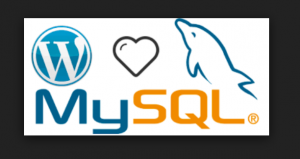
WordPress or PHP developers may find it difficult to do a fresh installation of WordPress and MySQL in a quick manner. This is where Docker comes to rescue. With Docker, one can quickly commission (or setup or install) and de-commission WordPress & MySQL development environment in no time. In this post, you will learn about some of the following: Pre-requisites – Docker Installation How to install WordPress and MySQL as container apps using Docker Access wordpress in browser Access wordpress installation within Docker container Access MySQL installation within Docker container Pre-requisites – Docker Installation Before getting started with WordPress/MySQL , first and foremost, Docker needs to be installed. Briefly speaking, …
10+ Key Stages of Data Science Project Life cycle
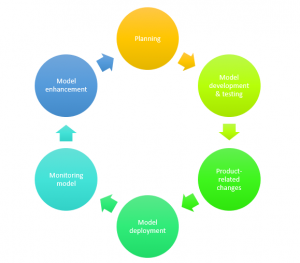
Data science projects need to go through different project lifecycle stages in order to become successful. In each of the stages, different stakeholders get involved as like in a traditional software development lifecycle. In this post, you will learn some of the key stages/milestones of data science project lifecycle. This article is aimed to help some of the following project stakeholders who play key roles in data science project implementation: Product managers Project managers ML architects The following represents 6 high-level stages of data science project lifecycle: Planning Model development & testing Product-level changes Model deployment Monitoring the model Model Enhancement Data Science Project Lifecycle – Planning ML Problem identification: …
N-Gram Language Models Explained with Examples
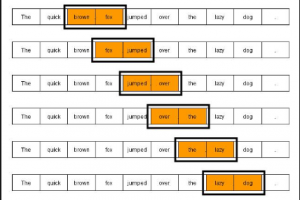
Language models are models which assign probabilities to a sentence or a sequence of words or, probability of an upcoming word given previous set of words. Language models are used in fields such as speech recognition, spelling correction, machine translation etc. Language models are primarily of two kinds: N-Gram language models Grammar-based language models such as probabilistic context-free grammars (PCFGs) In this post, you will learn about some of the following: Introduction to Language Models N-Grams language models Introduction to Language Models Language models, as mentioned above, is used to determine the probability of occurrence of a sentence or a sequence of words. Language models are created based on following …
Blockchain – Bitcoin Explorer Relaunched

Here is the newly launched portal, https://explorer.bitcoin.com/bch for getting details on Bitcoin (BTC) and Bitcoin Cash (BCH). Front page displays details on latest blocks and transactions. One could easily analyze transactions, blocks, and addresses on both the Bitcoin Cash (BCH) and Bitcoin Core (BTC) chains. All you need to do is select the type of cryptocurrency (BTC or BCH) in the top right vertical menu and you would be able to see the transactions and related details of that specific blockchain. Currently, bitcoin blockchain explorer is supported in five different languages: English Hindi Svenska Chinese Russian Note that Bitcoin cash (BCH) is a cryptocurrency which is used on the Blockchain …
What Blockchain can do and What it can’t do?

Blockchain is a continuously growing list of records, called blocks, which are linked and secured using cryptography. Each block typically contains a hash pointer as a link to a previous block, a timestamp and transaction data. By design, a blockchain is inherently resistant to modification of the data. Simply speaking, Blockchain helps in decentralizing the ledger or data or database with the help of cryptography. The blockchain is also called as distributed ledger technology. Some of the famous blockchains are Bitcoin blockchain, Ethereum, Bitcoin Cash, Litecoin etc. In this post, you will learn different aspects related to what Blockchain can do and what it can not do. On the lighter …
Quick Introduction to Smoothing Techniques for Language Models

Smoothing techniques in NLP are used to address scenarios related to determining probability / likelihood estimate of a sequence of words (say, a sentence) occuring together when one or more words individually (unigram) or N-grams such as bigram([latex]w_{i}[/latex]/[latex]w_{i-1}[/latex]) or trigram ([latex]w_{i}[/latex]/[latex]w_{i-1}w_{i-2}[/latex]) in the given set have never occured in the past. In this post, you will go through a quick introduction to various different smoothing techniques used in NLP in addition to related formulas and examples. The following is the list of some of the smoothing techniques: Laplace smoothing: Another name for Laplace smoothing technique is add one smoothing. Additive smoothing Good-turing smoothing Kneser-Ney smoothing Katz smoothing Church and Gale Smoothing …
Blockchain Architect – A Sample Job Description

Blockchain application development is going mainstream, and hence, would be requiring professionals with different roles and responsibilities including Blockchain architect, Blockchain developer etc. You may want to check out different Blockchain job designations on this page. The following is a list of points which can be made part of job description for Blockchain architect and related designations such as Blockchain platform architect, Blockchain solution architect, Blockchain lead architect etc. Demonstrate good understanding of Blockchain fundamentals, smart contracts, consensus algorithms Good understanding of different types of Blockchain such as public, private/permissioned, public permissioned etc. Good understanding of Blockchain framework such as Hyperledger Fabric, R3 Corda, Ethereum (Solidity) Good understanding of various …
Quantum Superposition States Explained with Examples

Qubit (Quantum Bit) is the fundamental unit of information in quantum computing as like bit which is the basic unit of information in classical computing. However, unlike bit in the classical computing which can exist in one of two states such as 0 and 1 at any given point of time, the qubit can be found to exist in states 0, 1 or the superposition state which, simply speaking, can be said to be both 0 and 1. In this post, you will learn some of the following: Qubit and Superposition State Superposition state explained with examples Qubit and Superposition State The following are some of the important points about …
Cheat sheet – 1500 Cryptocurrency Tokens / Coins & Details – Part 4

This post lists down some of the following information related to different cryptocurrency coins/tokens. This could be used as a quick reference/cheat sheet to get quick information about any specific cryptocurrency coin. Token name Ticker Symbol used in cryptocurrency exchanges Company’s Website Explorer where details in relation to coins, tokens can be found Source code (Github) Twitter handle List of 400 Cryptocurrency Tokens / Coins S.No Token Name Explorer Source Code Twitter 1101 Cannation (CNNC) Explorer 1 GitHub 1102 Dogecoin (DOGE) Explorer 1 GitHub @dogecoin 1103 Delphy (DPY) Explorer 1, Explorer 2 GitHub @delphy_org 1104 MicroMoney (AMM) Explorer 1, Explorer 2 GitHub @micromoneyio 1105 AnarchistsPrime (ACP) Explorer 1 GitHub …
Cheat sheet – 1500 Cryptocurrency Tokens / Coins & Details – Part 3

This post lists down some of the following information related to 400 different cryptocurrency coins/tokens. This could be used as a quick reference/cheat sheet to get quick information about any specific cryptocurrency coin. Token name Ticker Symbol used in cryptocurrency exchanges Company’s Website Explorer where details in relation to coins, tokens can be found Source code (Github) Twitter handle List of 400 Cryptocurrency Tokens / Coins S.No Token Name Explorer Source Code Twitter 701 Sparks (SPK) Explorer 1 GitHub @Sparks_Crypro 702 ALQO (ALQO) Explorer 1, Explorer 2 GitHub @ALQOCOIN 703 Curecoin (CURE) Explorer 1 GitHub @CureCoin_Team 704 NVO (NVST) Explorer 1 GitHub @nvoexchange 705 IslaCoin (ISL) Explorer 1 GitHub …
Cheat sheet – 1500 Cryptocurrency Tokens / Coins & Details – Part 2

This post lists down some of the following information related to different cryptocurrency coins / tokens. This could be used as a quick reference/cheatsheet to get quick information about any specific cryptocurrency coin. Token name Ticker Symbol used in cryptocurrency exchanges Company’s Website Explorer where details in relation to coins, tokens can be found Source code (Github) Twitter handle List of 400 Cryptocurrency Tokens / Coins S.No Token Name Explorer Source Code Twitter 301 SwagBucks (BUCKS) Explorer 1, Explorer 2 GitHub @SwagSociety_me 302 Etherparty (FUEL) Explorer 1, Explorer 2 GitHub @etherparty_com 303 Ripio Credit Network (RCN) Explorer 1, Explorer 2 GitHub @RCN_token 304 Revain (R) Explorer 1, Explorer 2 …
Cheat sheet – 1500 Cryptocurrency Tokens / Coins & Details

This post lists down some of the following information related to different cryptocurrency coins/tokens. This could be used as a quick reference/cheat sheet to get quick information about any specific cryptocurrency coin. Token name, Ticker Symbol used in cryptocurrency exchanges, Company’s Website Explorer where details in relation to coins, tokens can be found Source code (Github) Twitter handle This post lists down 300 tokens. The remaining 1200 tokens are split into another 3 pages such as below: 300-700 Cryptocurrency Tokens 700-1100 Cryptocurrency Tokens 1100-1500 Cryptocurrency Tokens List of 300 Cryptocurrency Tokens / Coins S.No Token Name Explorer Source Code Twitter 1 Primalbase Token (PBT) Explorer 1 @primalbasehq 2 CHIPS (CHIPS) …
How to Setup Apollo Graphql Client with Angular
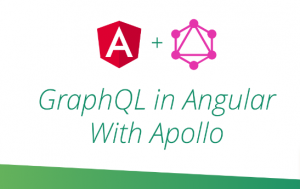
Apollo Client is a GraphQL client for Angular, JavaScript, and native platforms such as some of the following. Apollo client for Angular is used to build Angular UI components that fetch data with GraphQL. Javascript React VueJS Meteor Ember Polymer Native platforms Native iOS with Swift Native Android with Java In this post, you will learn about setting up Apollo GraphQL client for using it in your Angular App. Instructions on setting up Apollo GraphQL Client with Angular App The instructions given below is worked out with the Angular 4.* app. However, this should also apply to the Angular 5 and later angular versions’ app. As per instructions on this …
I found it very helpful. However the differences are not too understandable for me